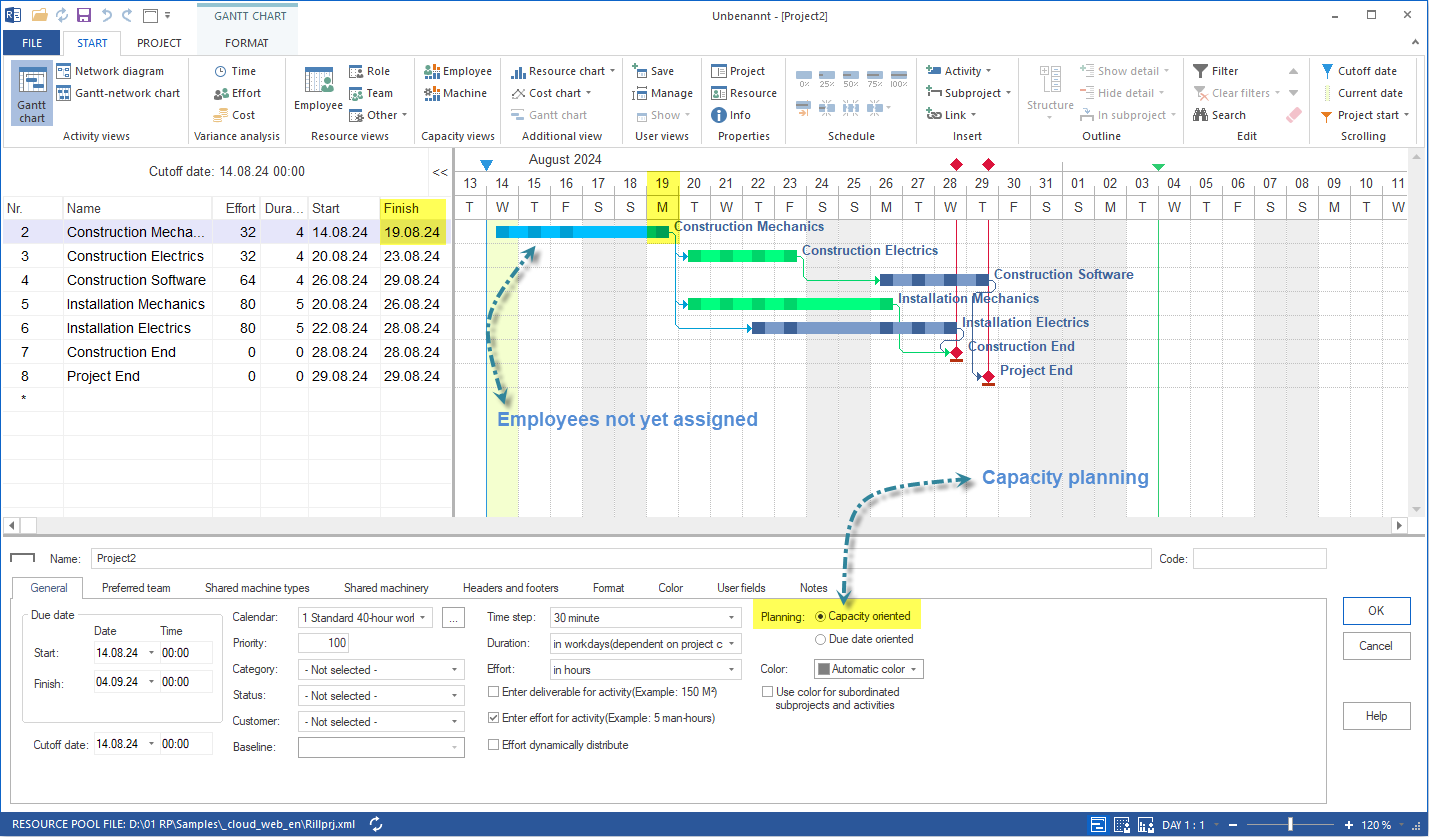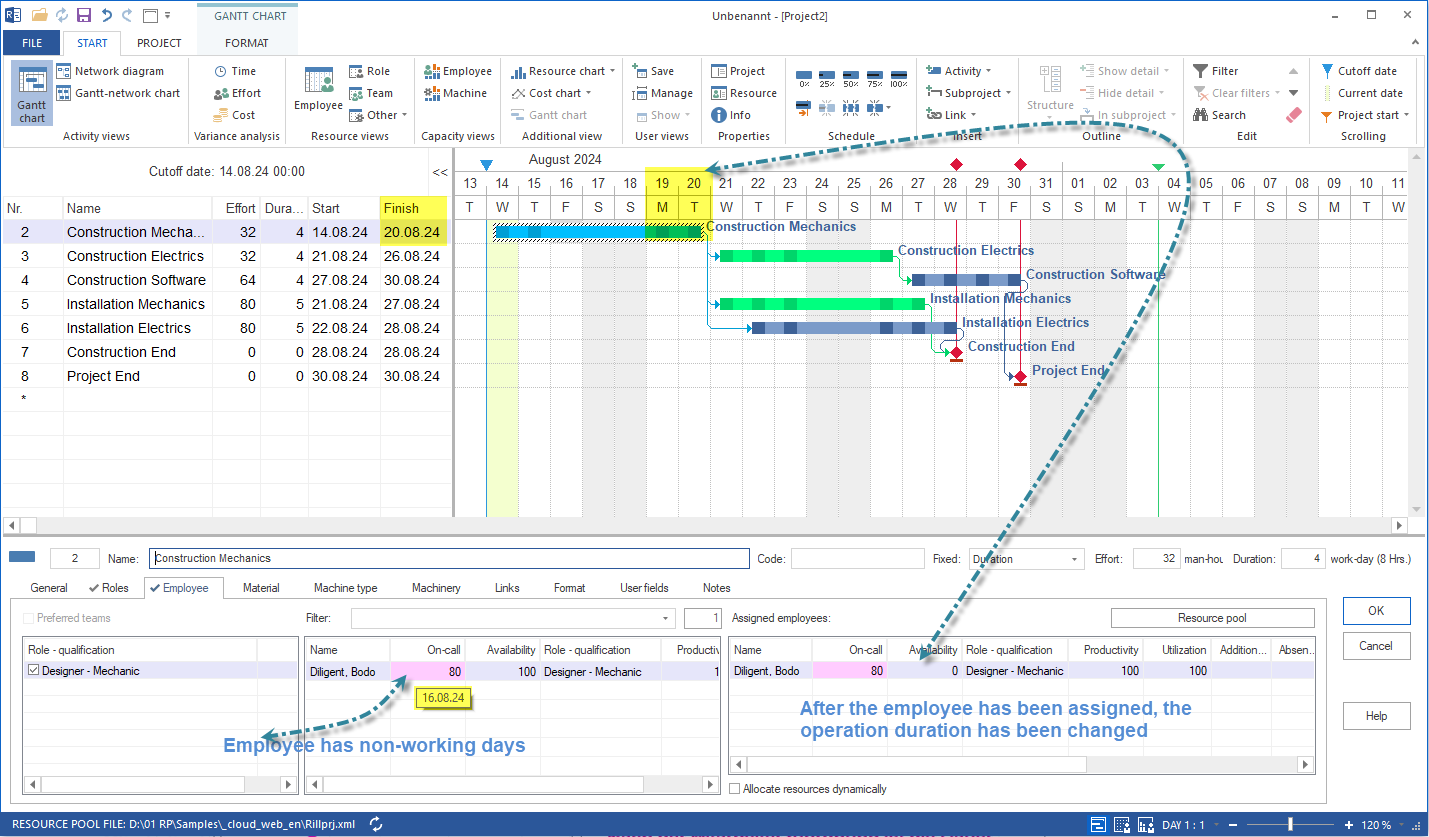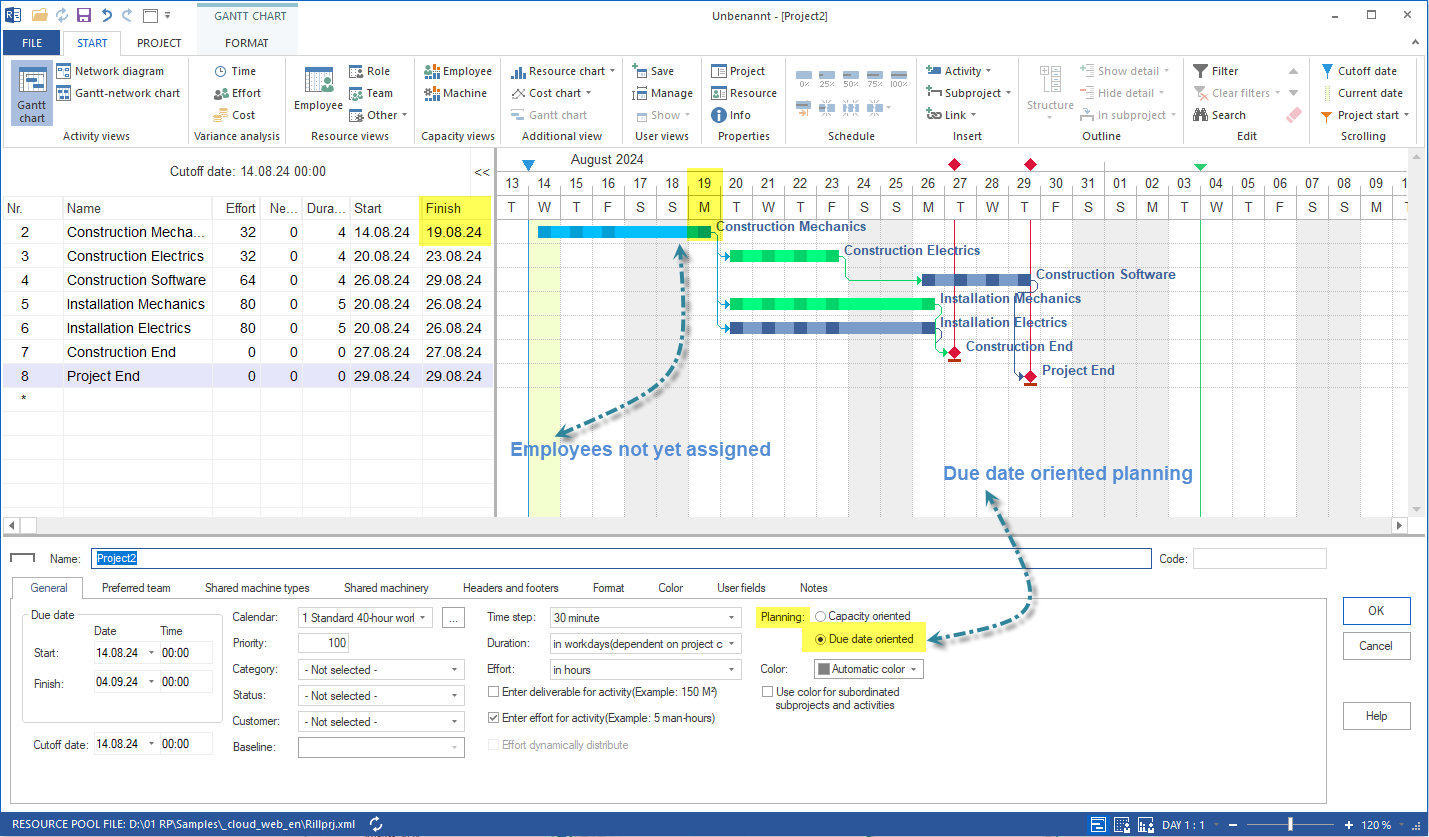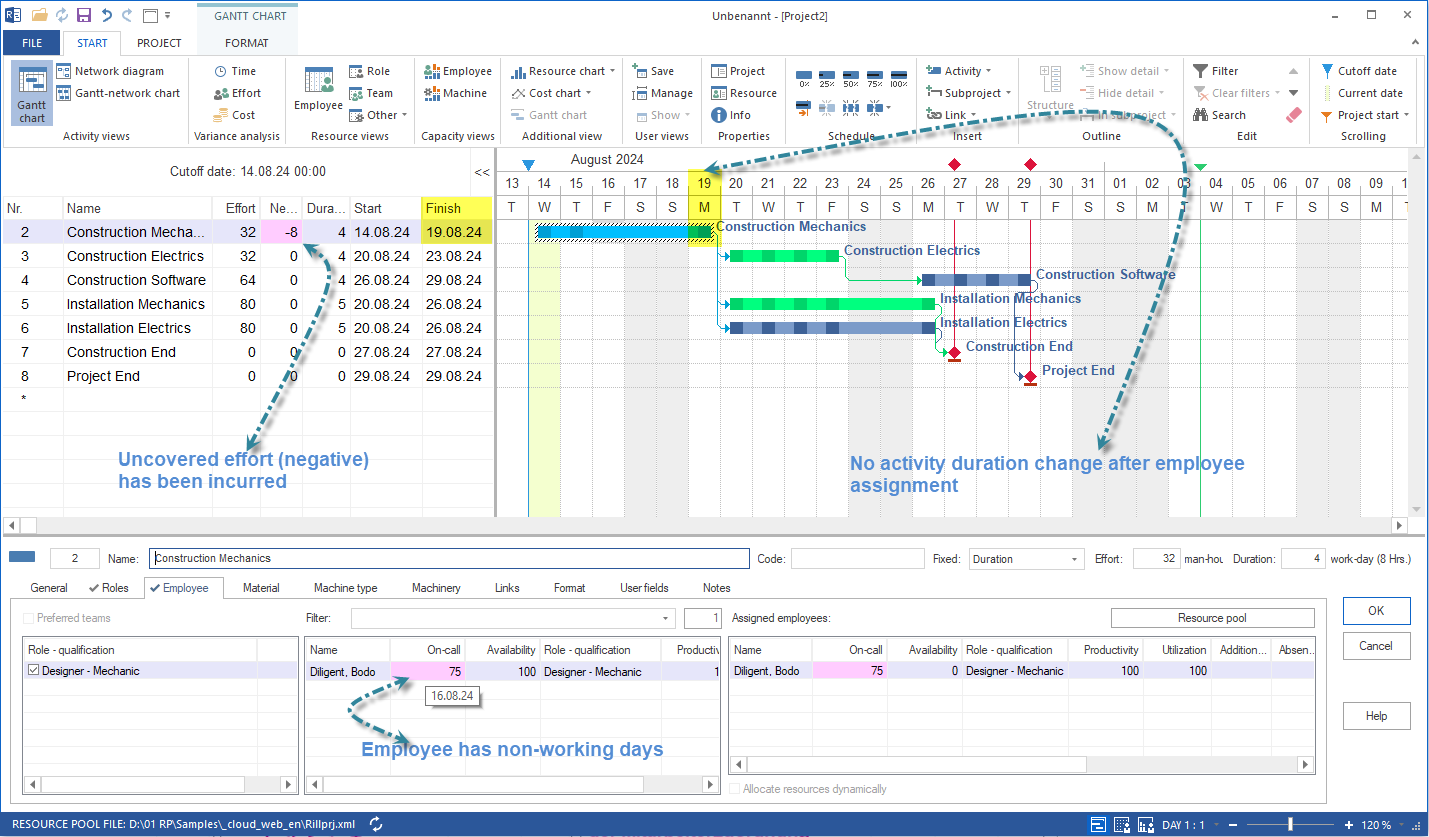The successful execution of projects often depends on efficient resource management. Especially in complex projects with many tasks and limited resources, the right planning and adjustment of capacities can make the difference between success and failure.

Capacity adjustment and capacity planning in resource management.
Capacity adjustment and capacity planning are key concepts in project resource management. They play a critical role in ensuring that projects can be completed on time and efficiently. Let’s define these terms in more detail and explain their meaning in the context of resource management.
Capacity adjustment
Capacity adjustment refers to the ability to dynamically adjust the availability and allocation of resources in a project to ensure that the project’s requirements can be met. This may mean increasing or decreasing resources such as labor, machinery, or funding at certain stages of a project to meet project objectives. Capacity adjustment is required when project requirements change or unforeseen obstacles arise that cause the original resource planning to be reconsidered. The goal of capacity adjustment is to ensure that all tasks can be completed on time and with the required resources.
Capacity Planning
Capacity planning is the process of planning and managing the availability of resources in advance to ensure they meet project requirements. This includes estimating, allocating, and managing resources such as labor time, employee resources, budget, and equipment. Capacity planning aims to identify bottlenecks, avoid overloads, and ensure that projects can be completed on time and within budget. It also takes into account factors such as the availability of skilled workers, working hours, holidays and vacation periods.
In the context of resource management, capacity adjustment and capacity planning are closely related. While capacity planning represents the long-term forward planning of resources, capacity adjustment involves the short-term adjustment of those resources to respond to current project needs. Together, they form a critical set of tools for project managers and teams to ensure that projects can be effectively managed and successfully completed.
Optimal resource management with Rillsoft Project.
We take a closer look at Rillsoft Project software and its ability to provide automatic capacity adjustment suggestions to enable planning that meets capacity or schedule requirements.
Rillsoft Project is a project management software that stands out for its flexibility and adaptability. A key feature of the software is the ability to choose between two different planning approaches: fidelity to capacity and fidelity to schedule.
The terms “project planning true to capacity” and “project planning true to schedule” are closely related to capacity adjustment and capacity planning in the resource management of projects. They describe different approaches to planning projects in terms of managing resources and meeting schedules.
Capacity-fidelity project planning
Capacity-fidelity project planning is a planning method that focuses on ensuring that available resources, whether labor, machinery, or financial resources, are not overloaded. In this planning method, the project schedule is created so that it is realistic and takes into account the available resources. The goal is to set realistic delivery dates that are achievable given capacity and availability. Project planning that is true to capacity is especially recommended when resources are limited and it is important to ensure that they are not overused.
If your existing resources are sufficient and you want to ensure that they are not overused, capacity-fidelity planning is the right choice. This approach is particularly useful for evaluating the duration and feasibility of upcoming projects. The goal is to determine a realistic delivery date that is within the available resources.


Advantages of Capacity-Based Planning
- Avoiding overload: your resources will never be overloaded, as the project schedule is calculated taking into account available capacities.
- Realistic delivery dates: You get accurate forecasts of the duration and completion dates of your projects.
Disadvantages of capacity-based planning
- Extending task duration: Due to non-working days or limited resources, you may experience delays in completing tasks.
- Postponing tasks: Adjusting capacity may require postponing some tasks to avoid the overload.
On-Time Project Planning.
On-time project planning is an approach that focuses on meeting activity deadlines and the project finish date. In this planning method, project times and deadlines are set so that they must be met at all costs, even if this means that additional resources are needed. On-schedule project planning is often used in projects where it is critical to meet delivery commitments to customers or stakeholders. To ensure on-time delivery, overloads can be compensated for by increasing processing capacity or adjusting efforts.
If you absolutely want to ensure that both the activity deadlines and the project deadline are met, on-time planning is the right choice. Here, overloads can be compensated for either by increasing processing capacity or by adjusting effort.


Advantages of on-time planning
- Compliance with deadlines: Activity deadlines and the project deadline are reliably met.
- Clear delivery commitments: Customers and stakeholders can rely on reliable delivery dates.
Disadvantages of on-time planning
- More resources required: To meet deadlines, it may be necessary to deploy additional resources.
- Adjusting goals: It may be necessary to adjust functions or performance goals to ensure on-time delivery.
In summary, capacity-focused and schedule-focused project planning methods are two different approaches to achieving project goals. The choice between these approaches depends on the specific requirements and priorities of a project. Capacity-focused planning ensures that resources are not overloaded, while schedule-focused planning ensures that deadlines are met. In practice, a combination of both approaches can be used to achieve the best results for a project.
Overall, Rillsoft Project provides a powerful solution for capacity management in projects. The ability to choose between capacity-based and schedule-based planning allows companies to respond flexibly to different requirements and challenges in their projects. The software helps project managers set realistic delivery dates while ensuring that resources are used efficiently. With Rillsoft Project, you can optimize your resource management and increase the success of your projects.
